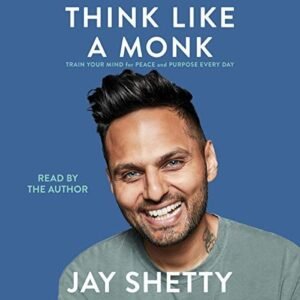Product Description
A motivational and inspiring guide to wholehearted living, rather than just the average self-help book, with this groundbreaking work Brené Brown, Ph.D., bolsters the self-esteem and personal development process through her characteristic heartfelt, honest storytelling. With original research and plenty of encouragement, she explores the psychology of releasing our definitions of an “imperfect” life and embracing living authentically. Brown’s “ten guideposts” are benchmarks for authenticity that can help anyone establish a practice for a life of honest beauty—a perfectly imperfect life.
Now more than ever, we all need to cultivate feelings of self-worth, as well as acceptance and love for ourselves. In a world where insults, criticisms, and fears are spread too generously alongside messages of unrealistic beauty, attainment, and expectation, we look for ways to “dig deep” and find truth and gratitude in our lives. A new way forward means we can’t hold on too tightly to our own self-defeating thoughts or the displaced pain in our world. Instead, we can embrace the imperfection.
Once you see a pattern, you can’t un-see it. Trust me, I’ve tried. But when the same truth keeps repeating itself, it’s hard to pretend that it’s just a coincidence. For example, no matter how hard I try to convince myself that I can function on six hours of sleep, anything less than eight hours leaves me impatient, anxious, and foraging for carbohydrates. It’s a pattern.I also have a terrible procrastination pattern: I always put off writing by reorganizing my entire house and spending way too much time and money buying office supplies and organizing systems. Every single time.
One reason it’s impossible to un-see trends is that our minds are engineered to seek out patterns and to assign meaning to them. Humans are a meaning-making species. And, for better or worse, my mind is actually fine-tuned to do this. I spent years training for it, and now it’s how I make my living.
As a researcher, I observe human behavior so I can identify and name the subtle connections, relationships, and patterns that help us make meaning of our thoughts, behaviors, and feelings. I love what I do. Pattern hunting is wonderful work and, in fact, throughout my career, my attempts at un-seeing were strictly reserved for my personal life and those humbling vulnerabilities that I loved to deny. That all changed in November 2006, when the research that fills these pages smacked me upside the head. For the first time in my career, I was desperate to un-see my own research.
Up until that point, I had dedicated my career to studying difficult emotions like shame, fear, and vulnerability. I had written academic pieces on shame, developed a shame-resilience curriculum for mental health and addictions professionals, and written a book about shame resilience called I Thought It Was Just Me.
In the process of collecting thousands of stories from diverse men and women who lived all over the country–ranging in age from eighteen to eighty-seven–I saw new patterns that I wanted to know more about. Yes, we all struggle with shame and the fear of not being enough. And, yes, many of us are afraid to let our true selves be seen and known. But in this huge mound of data there was also story after story of men and women who were living these amazing and inspiring lives.









Reviews
There are no reviews yet.